Contact Pro Premium Expert Support »If u = tan^1 (x^3y^3/x y) , then x^2 ∂^2u/∂x^2 2xy∂^2u/∂x∂y y^2∂^2u/∂y^2 = ?Find the value of the expression sin(2 tan1(/3) cos(tan12√2) asked in Class XII Maths by rahul152 ( 2,8 points) inverse trigonometric functions

Ex 5 3 10 Find Dy Dx In Y Tan 1 3x X3 1 3x2 Ex 5 3
If tan^ -1 (x^ 2 -y^ 2 /x^ 2 +y^ 2 )=a prove that dy/dx=x(1-tan)/y(1+tana)
If tan^ -1 (x^ 2 -y^ 2 /x^ 2 +y^ 2 )=a prove that dy/dx=x(1-tan)/y(1+tana)-To ask Unlimited Maths doubts download Doubtnut from https//googl/9WZjCW If `y=tan^(1)1/(1xx^2)tan^(1)1/(x^23x3)tan^(1)1/(x^25x7)`upto `n`teExtended Keyboard Examples Upload Random Compute answers using Wolfram's breakthrough technology & knowledgebase, relied on by millions of students & professionals For math, science, nutrition, history, geography, engineering, mathematics, linguistics, sports, finance, music



Link Springer Com Content Pdf m 3a978 1 349 3 2f1 Pdf
Have a question about using WolframAlpha?Then the x2 y2 z z tangent plane is z = z0 0 x0 (x−x y0 x0 x y0 y , since x2y2 = z2 0) (y−y0), or z =The function (,) or (,) (from "2argument arctangent") is defined as the angle in the Euclidean plane, given in radians, between the positive x axis and the ray to the point (x, y) ≠ (0, 0) The function (,) first appeared in the programming language Fortran (in IBM's implementation FORTRANIV in 1961) It was originally intended to return a correct and unambiguous value for
The vertical asymptotes for y = 2 tan ( x) y = 2 tan ( x) occur at − π 2 π 2, π 2 π 2 , and every π n π n, where n n is an integer π n π n There are only vertical asymptotes for tangent and cotangent functions Vertical Asymptotes x = π 2 π n x = π 2 π n for any integer n`(sin^2 x cos^2 x)/(cos^2 x) = (sin^2 x cos^2)/(cos^2 x)` valid Hence, testing if the `tan^2 x 1= sec^2 x` holds yields that it is a valid statement Approved by eNotes Editorial Team7 8 9 Back
Putting x2=cos2θ, we have `y=tan^ (−1) ( (sqrt (1cos2θ)sqrt (1−cos2θ))/ (sqrt (1cos2θ)−sqrt (1−cos2θ)))` `y=tan^ (−1) ( (sqrt (2cos^2theta)sqrt (2sin^2θ))/ (sqrt (2cos^2θ)−sqrt (2sin^2θ)))` `y=tan^ (1) ( (costhetasintheta)/ (costhetasintheta))y` If tan 2 X=2tan 2 Y1 , then find the value of cos2Xsin 2 Y?Click here👆to get an answer to your question ️ If log√(x^2y^2) = tan^1 (yx), then prove that dydx = x yx y




If Tan 1 X2 Y2 X2 Y2 A Prove That Dy Dx X 1 Tana Y 1 Tana Brainly In




If Logy Tan 1 X Show That 1 X 2 Y 2 2x 1 Y 1 0
By symmetry (interchanging x and y), zy = ;1 2 El eo Q Which of the following definite integrals represents the limit 1 z?A¤ lim n00 You may use the fact A Givenlimn→∞ ∑i=0nxi1(xi)3 ∆x on the interval 2, 5integral as limit of sum∫abf(x)dx=limn→∞ ∑i=0§37 #5 Find the general solution of the differential equation y"y = tan(t),0




Ex 5 3 10 Find Dy Dx In Y Tan 1 3x X3 1 3x2 Ex 5 3



What Is The Nth Derivative Of Tan 1 2x 1 X 2 Quora
Tangent of x^22xyy^2x=2, (1,2) \square!If u=sin1((x^2y^2)/(xy)) then show that x(du/dx)y(du/dy)=tan u MATHEMATICS1 question answer collection If y = tan1(2x/(1 22x 1)), then dy/dx at x = 0 is Welcome to Sarthaks eConnect A unique platform where students can interact with
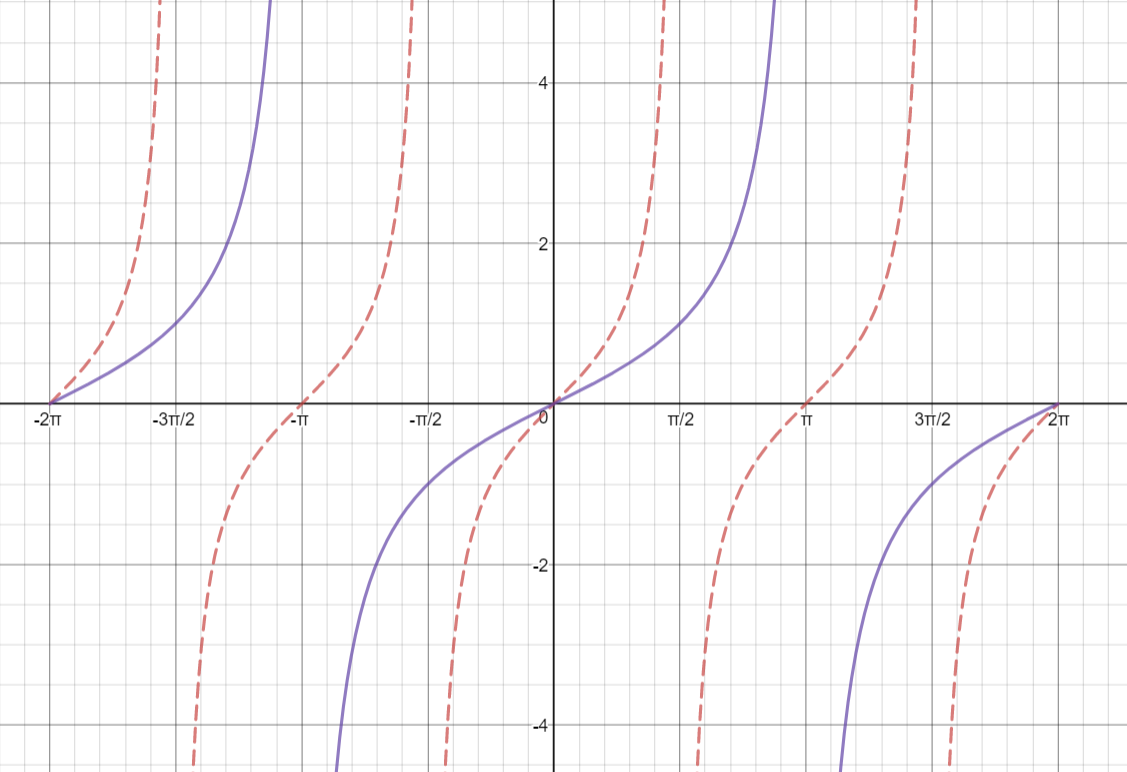



How Do You Graph Y Tan 1 2 X Socratic




Find The Values Of Tan1 2 Sin 1 2x 1 X2 Cos 1 1 Y2 1 Y2 X 1 Y 0 And Xy 1 Cbse Class 12 Maths Learn Cbse Forum
\\tan^{ 1} \frac{3}{4}\ \\text { Given } \ \ y^2 = x \left( 1 \right)\ \ x^2 = y \left( 2 \right)\ \\text { Point} = \left( 1, 1 \right)\2 PARTIAL DIFFERENTIATION 1 b) wx = −y2/x2, wy = 2y/x;Thanks calculus trigonometry derivatives Share Cite



If Y 2 Tan 1 X Sin 1 2x 1 X 2 For All X Then Y Sarthaks Econnect Largest Online Education Community



If Y 2 A 2 B 2 Tan 1 A B A B Tan X 2 Then Prove That D 2y Dx 2 Bsinx A osx 2 Sarthaks Econnect Largest Online Education Community
Solution for y = tan(x) y = 2 sin(x) x = !Extended Keyboard Examples Upload Random Compute answers using Wolfram's breakthrough technology & knowledgebase, relied on by millions of students & professionals For math, science, nutrition, history, geography, engineering, mathematics, linguistics(2x) 3 y = tan1 (x2) 4 y = tan1 (sin x) 5 y = sin(x) tan'(x)




If Log Y Tan 1x Show That 1 X2 Y2 2x 1 Y1 0 Maths Continuity And Differentiability Meritnation Com




If Y Tan 1 1 X 1 2 1 X 1 2 1 X 1 2 1 X 1 2 Prove That Dy Dx 1 2 1 X2 1 2 Mathematics Topperlearning Com Fuf1cdaa
Inverse Trigonometric Formulas Trigonometry is a part of geometry, where we learn about the relationships between angles and sides of a rightangled triangleIn Class 11 and 12 Maths syllabus, you will come across a list of trigonometry formulas, based on the functions and ratios such as, sin, cos and tanSimilarly, we have learned about inverse trigonometry concepts If tan1 (x 2 y 2)/ (x 2 y 2) = a ;1)integrate the following ∫4 x 3 x dx 2)a number is chosen randomly from numbers 1 to 60the 2 Answer(s) Available Prove that, ∫(x n 1 /1x)dx=π/sin nπ within the limit 0 to infinity




Assignments For Class Xii




If Logsqrt X 2 Y 2 Tan 1 Y X Then Dy Dx Is
Int (((xy)/2)^2 (1(xy)/2)^2) dx dy, x=0 to 1, y=0 to 1 Natural Language;Thus completing the proof I follow well the implicit derivation, and the trigonometric identity $\sec^2(x)=1\tan^2(x)$, but I don't follow how did it jump to the conclusion that $\tan^2(y)=x^2$ I can't find a reference for this What would be the reason for this?Solve your math problems using our free math solver with stepbystep solutions Our math solver supports basic math, prealgebra, algebra, trigonometry, calculus and more




If Lim X Oo 4x Pi 4 Tan 1 X 1 X 2 Y 2 4y 5 Then Y Can Be Equal To




If Y Tan 1 X Sqrt 1 X 2 1 Then Dy Dx Youtube
Free online tangent calculator tan(x) calculator This website uses cookies to improve your experience, analyze traffic and display ads4 Write x 25x as x^25*x 3 Use paranthesis() while performing arithmetic operations Eg1 Write sinxcosxtanx as sin(x)cos(x)tan(x) 2 Write secx*tanx as sec(x)*tan(x) 3 Write tanx/sinx as tan(x)/sin(x) 4 Use inv to specify inverse and ln to specify natural log respectively Eg1 Write sin1 x as asin(x) 2 Write ln x as ln(x) 5For $1 \le x < 0$, we have that $\tan x < 0 < \sqrt{1x^2}$, so there are no solutions in this range For $0 \le x \le 1$, we have that $\tan x$ is increasing and $\sqrt{1x^2}$ is decreasing, so there is at most one solution Also, by the intermediate value theorem, we see there must be at least one solution Therefore, there is exactly one



Find Dy Dx When X And Y Are Connected By The Relation Tan 1 X2 Y2 A Studyrankersonline




Partial Derivative If U X 2 Tan 1 Y X Y 2 Tan 1 X Y Prove ә 2u әxәy X 2 Y 2 X 2 Y 2 Youtube
y '= (2x)/(1 x^4) Use (tan^1(u))' = (u')/(1u^2) Let u = x^2, u' = 2x y ' = (2x)/(1 (x^2)^2) = (2x)/(1 x^4)X=2t1, y=t^21 Natural Language;Subresultants((x^2 y^2 x y^2) 0, y^21, y) grad (x^2 y^2 x y^2) 0;




If Y E X Tan 1 X Then Prove That Left 1 X 2 Right Frac D 2 Y D X 2 2 Left 1 X X 2 Right Frac D Y D X 1 X 2 Y 0




What Is The Nth Derivative Of Arctan 2x 1 X 2 In Terms Of R And Theta Quora
This is an online javascript scientific calculator You can click the buttons or type to perform calculations as you would on a physical calculator 0 sin cos tan DegRad sin 1 cos 1 tan 1 π e x y x 3 x 2 e x 10 x y √x 3 √x √x ln log () 1/x % n!Find f" f(x) = 2e ** sin nx b y = Vinx C y = tan1 x This problem has been solved!{√1x21/x} A 1/(1x2) B 2/(1x2) C 1/2(1x2) D none of these
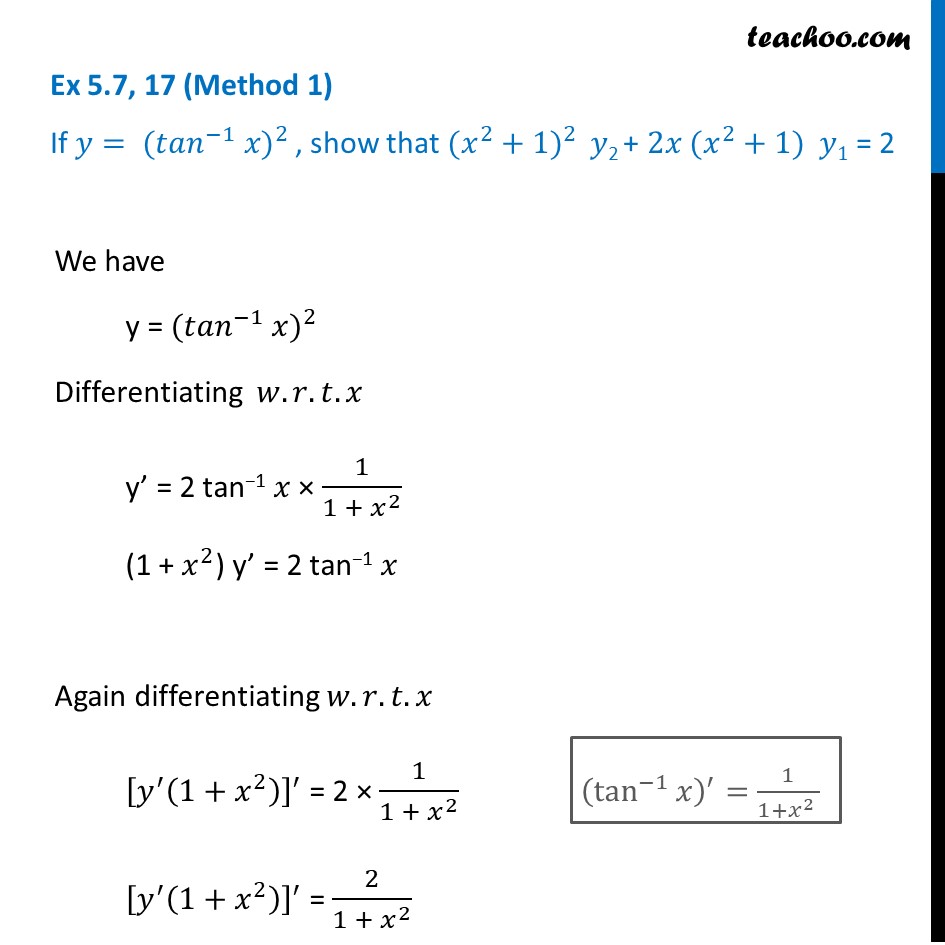



Ex 5 7 17 If Y Tan 1 X 2 Show X2 1 Y2 2x X2 1
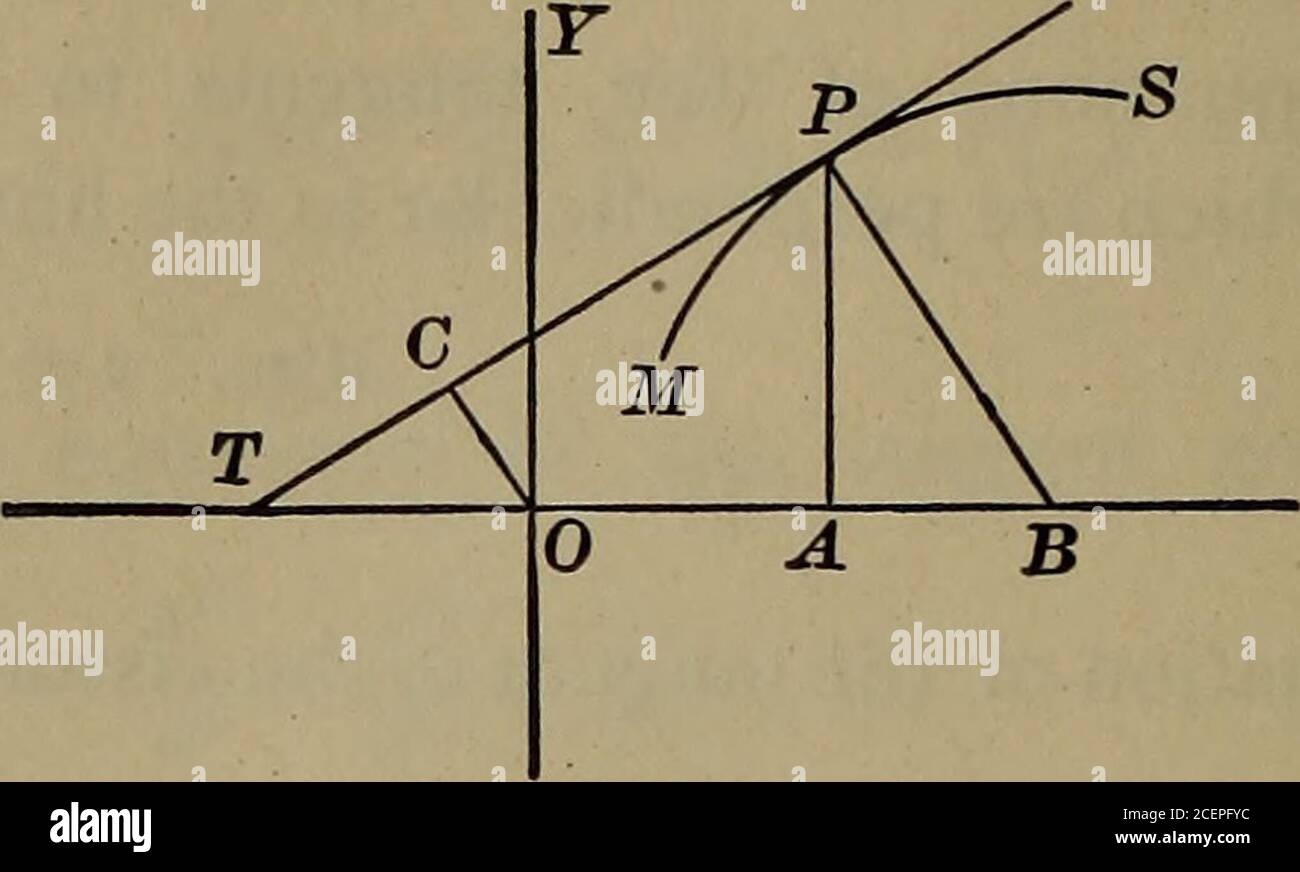



Differential And Integral Calculus To The Circle X 4 2 Y 3 2 25 At The Point 7 1 7 Find The Equations Of The Tangents To The Hyperbola4x2 Gy2 36
Get stepbystep solutions from expert tutors as fast as 1530 minutes Your first 5 questions are on us! If u = tan–1 (x2 y2/ x y), prove that x ∂u/∂x y ∂u/∂y = 1/2 sin 2u Find the value of the following tan1/2sin^1(2x/(1 x^2)) cos^1((1 y^2)/(1 y^2), x < 1, y > 0 asked in Mathematics by Radhika01 ( 631k points) inverse trigonometric functions




Ex 5 3 10 Find Dy Dx In Y Tan 1 3x X3 1 3x2 Ex 5 3




Inverse Trigonometeric Function
If z < 0, then 90^\circCalculus Find dy/dx tan (xy)=y/ (1x^2) tan(x y) = y 1 x2 tan ( x − y) = y 1 x 2 Differentiate both sides of the equation d dx(tan(x y)) = d dx( y 1 x2) d d x ( tan ( x − y)) = d d x ( y 1 x 2) Differentiate the left side of the equation Tap for more stepsCompute answers using Wolfram's breakthrough technology & knowledgebase, relied on by millions of students & professionals For math, science, nutrition, history



3
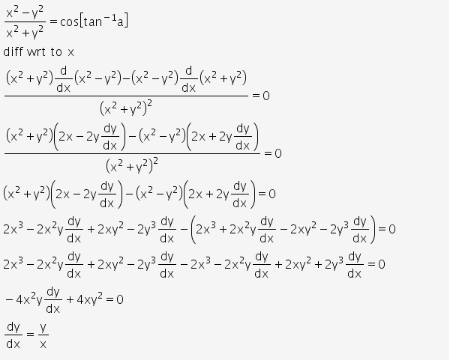



If Cos 1 X2 Y2 X2 Y2 Tan 1 A Prove That Dy Dx Y X Cbse Class 12 Learn Cbse Forum
Answer to Q1 a) if f(x, y) = x2 tan1 (2) y? Free Online Scientific Notation Calculator Solve advanced problems in Physics, Mathematics and Engineering Math Expression Renderer, Plots, Unit Converter, Equation Solver, Complex Numbers, Calculation HistoryShare with your friends Share 8 tan 2 x = 2 tan 2 y 1 A d d i n g 1 b o t h s i d e s tan 2 x 1 = 2 tan 2 y 1 1




Problems On Partial Differentiation U Log X 2 Y 2 Z 2 U Tan 1 2xy X 2 Y 2 Z F X Ay Q X Ay Youtube



Solve The Differential Equation 1 Y2 Tan 1 X Dx 2y 1 X2 Dy 0 Studyrankersonline
SOLUTION x =tan A,y= tan B ⇒ tan1 2{sin−1( 2x 1x2)cos−1(1−y2 1y2)}, = tan1 2{sin−1(sin 2A)cos−1(cos 2B)} = tan1 2(2B) = tan(AB) = tanAtanB 1−tan A tan B = xy 1−xyProve that dy/dx = x( 1 tanA) / y ( 1 tanA) Share with your friends Share 6 G i v e n t h a t,Experts are tested by Chegg as specialists in their subject area We review their content and use your feedback to keep the quality high




A Prove Tan 1 X Tan 1 Y Tan 1 X Y 1 Chegg Com




If Y Tan 1 1 X 2 1 X 2 1 X 2 1 X 2 X 2 1 Then Find Dydx
Transcribed image text dy Find for dx 1 y = tan' (Vx) 2 y = sin!Tan 1 (=), Show that 10 Marks a2 f x2 y2 axay x2 y2 b) Let f R2 R be defined by 4xy2 f(x,y) = 3x3 y3 ifSee the answer See the answer See the answer done loading Show transcribed image text Expert Answer Who are the experts?




Find Dy Dx If Tan 1 X 2 Y 2 A




If Log X 2 Y 2 Tan 1 Yx Then Prove That Dydx X Yx Y
Solve `(1y^(2))dx=(tan^(1)yx)dy`Welcome to Doubtnut Doubtnut is World's Biggest Platform for Video Solutions of Physics, Chemistry, Math and Biology DouEquations Tiger Algebra gives you not only the answers, but also the complete step by step method for solving your equations tan^(1)((x^(2)y^(2))/(x^(2)y^(2)))=2k so that you Note now that sec2(x − y) = 1 tan2(x − y) = 1 y2 (1 x2)2 so dy dx = 1 y2 (1x2)2 2xy (1x2)2 1 y2 (1x2)2 1 1x2 and multiplying numerator and denominator by (1 x2)2 dy dx = (1 x2)2 y2 2xy (1 x2)2 y2 1 x2 dy dx = x4 2x2 y2 2xy 1 x4 3x2 y2 2 Answer link




Math 113 Hw 7 Solutions Pdf Free Download




Ex 9 2 9 Verify X Y Tan 1 Y Y2y Y2 1 0 Ex 9 2
Therefore at (1,2,4), we get wx = −4, wy = 4, so that the tangent plane is w = 4−4(x −1)4(y −2), or w = −4x 4y x x y 2B2 a) zx = = ; Ex 22, 15 If tan−1 (x − 1)/(x − 2) tan−1 (x 1)/(x 2) = 𝜋/4 , then find the value of x Given tan−1 ((𝐱 − 𝟏)/(𝐱 − 𝟐)) tan−1Given The function w= (x2y2 17)tan−1(y w) w = ( x 2 y 2 17) tan − 1 ( y w) Taking logarithm on both sides of the given function logw= log(x2y217)tan−1(y w) logw= tan−1( y w




If Tan 1x Tan 1y Tan 1z Pi 2 Then Prove That Xy Yz Zx 1




Simplify Sin Cot 1tan Cos 1x
Graph y=1/2*tan(x) Find the asymptotes Tap for more steps For any , vertical asymptotes occur at , where is an integer Use the basic period for , , to find the vertical asymptotes for Set the inside of the tangent function, , for equal to to find where the vertical asymptote occurs for So, I've been trying to solve the shown above, and I've attempted to employ a series solution method It's relatively easy to prove that 0 is a regular singular point of Ex 57, 17 (Method 1) If 𝑦= 〖(〖𝑡𝑎𝑛〗^(−1) 𝑥)〗^(2 ), show that 〖(𝑥^21)〗^(2 ) 𝑦2 2𝑥 〖(𝑥^21)〗^ 𝑦1 = 2 We have y
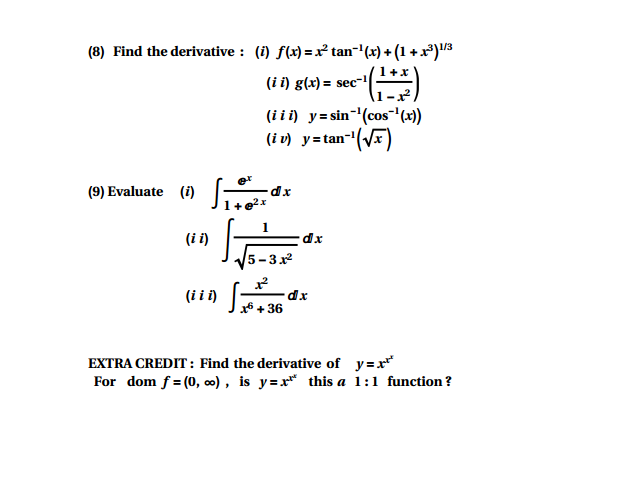



Find The Derivative I F X X 2 Tan 1 X 1 Chegg Com




Let F X Y Tan 1 X Y Then F Yx X Y Is A Chegg Com
If y = tan1\(\left\{\frac{\sqrt{1x^21}}{x}\right\}\) then dy/dx = ?




If Y Tan 1 X 2 Prove That 1 X2 2y2 2x 1 X2 Y1 2 Explain In Great Detail Mathematics Topperlearning Com Z68xug




If U Sin 1 X 2 Y 2 X Y Then Show That X Du Dx Y Du Dy Tan U Mathematics 1 Question Answer Collection




Example 13 Solve Tan 1 2x Tan 1 3x Pi 4 Class 12




Find Length Of The Arc Of Y 2 X Mathematics Stack Exchange




If Log X2 Y2 2tan 1 Y X Then Show That Dy Dx X Y X Y Brainly In




Atan2 Wikipedia
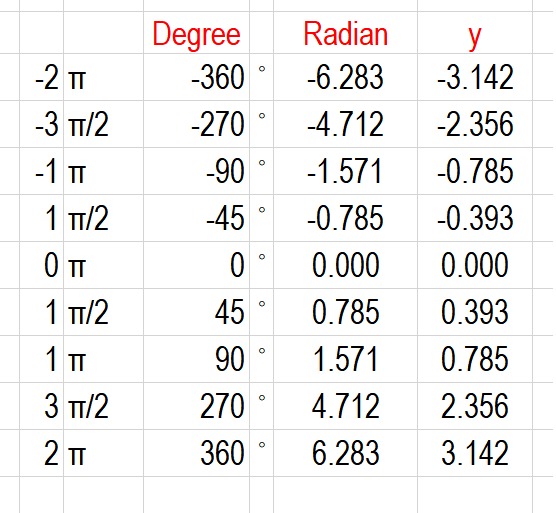



How Do You Graph Y Tan 1 2 X Socratic
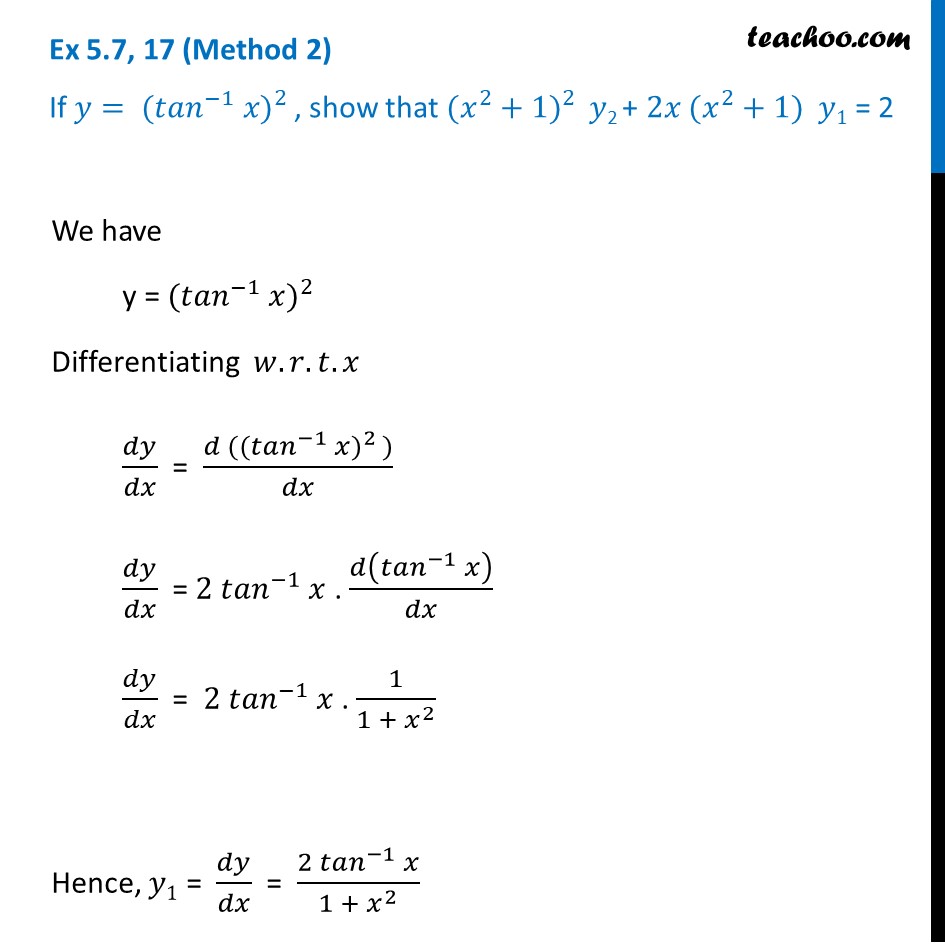



Ex 5 7 17 If Y Tan 1 X 2 Show X2 1 Y2 2x X2 1
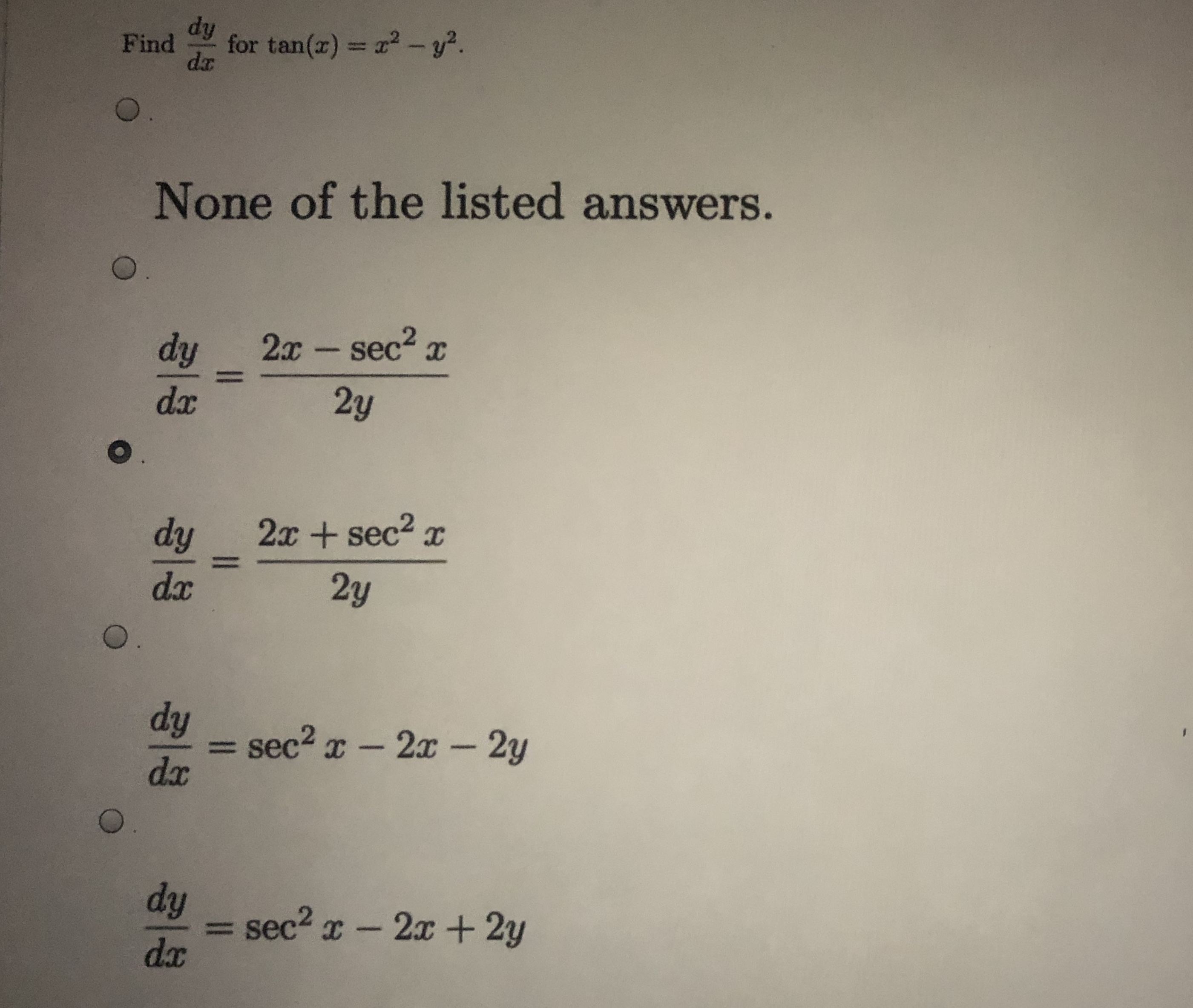



Answered Dy Find Dr For Tan R Y2 None Of Bartleby




If Cos 1 X 2 Y 2 X 2 Y 2 Tan 1 A Prove That Dy



If Cos 1 X 2 Y 2 X 2 Y 2 Tan 1 A Then Prove That Dy Dx Y X Sarthaks Econnect Largest Online Education Community




Find Dy Dx Log Root X2 Y2 Tan 1y X Ans X Y X Y Maths Continuity And Differentiability Meritnation Com
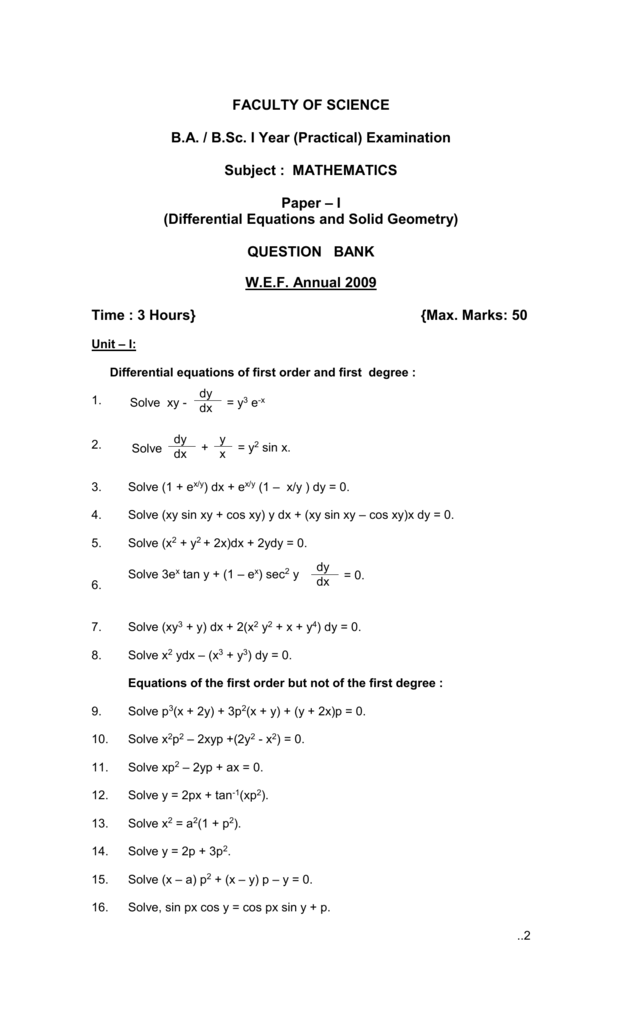



Paper




If U X 2tan 1 Y X Y 2tan 1 X Y Prove That Del 2u




If Y Ex Tan 1 X Prove That 1 X2 D2y Dx2 2 1 X X2 Dy Dx 1 X 2 Y 0 Maths Continuity And Differentiability Meritnation Com
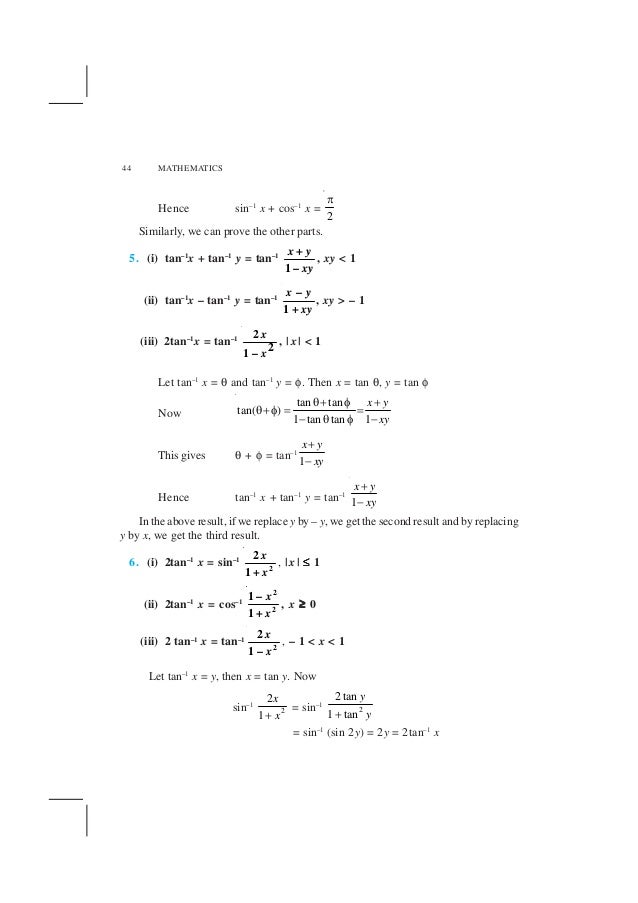



Inverse Trigonometric Functions Ch 2
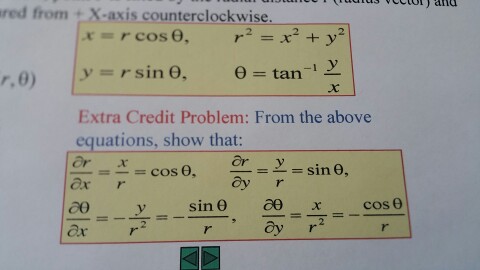



X R Cos Theta R 2 X 2 Y 2 Y R Sin Theta Chegg Com




If Tan 1 X 2 Y 2 X 2 Y 2 A Prove That Dy Dx X Y 1 Tana 1 Tana
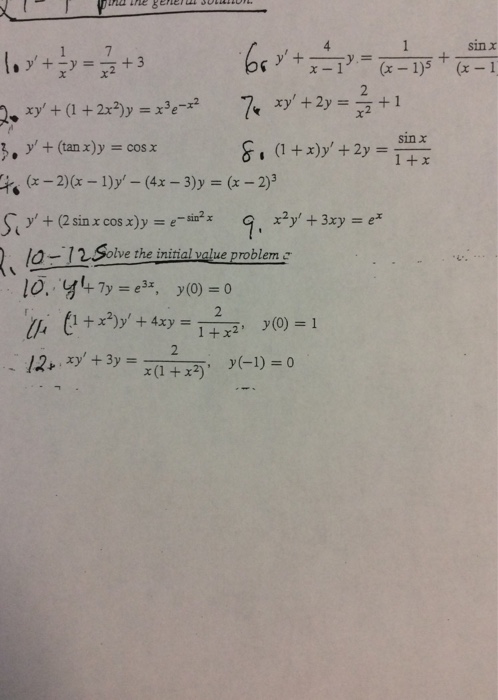



Y 1 X Y 7 X 2 3 Xy 1 2x 2 Y X 3 Chegg Com
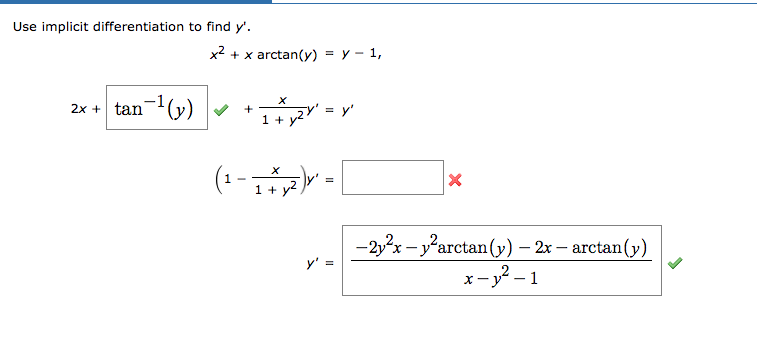



Use Implicit Differentiation To Find Y X 2 X Chegg Com



How To Find The Nth Derivative Of Math Tan 1 X Math Quora



1



Derivative 1 2 1 2 Ln X 1 X 1 Arctanx Mathskey Com




Se13e01 01 Gif




If Cos 1 X 2 Y 2 X 2 Y 2 Tan 1 A Then Prove That Dy Dx Y X



1




Y Tan 1 Sqrt 1 X 2 Sqrt 1 X 2 Sqrt 1 X 2 Sqrt 1 X 2 W H E R E 1 Ltx Lt1 X 0 Youtube



Link Springer Com Content Pdf m 3a978 1 349 3 2f1 Pdf




Show That Z Ln X 2 Y 2 2 Tan 1 Y X Satisfies The Laplaces S Equation Mathematics Stack Exchange
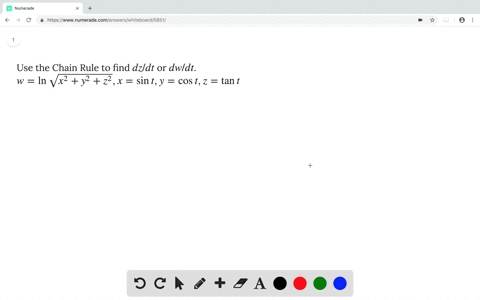



Solved Use The Chain Rule To Find Dz Ds And Dz Dt Z Tan 1 X 2 Y 2 X S Ln T Y Te S




Ex 2 2 15 If Tan 1 X 1 X 2 Tan 1 X 1 X 2 Pi 4



How To Prove That Math Left Dfrac X 3 Cdot Csc 2 Frac Tan 1 Frac X Y 2 2 Right Left Dfrac Y 3 Cdot Sec 2 Frac Tan 1 Frac Y X 2 2 Right X 2 Y 2 Cdot X Y Math Quora




Misc 44 Mcq Value Fo Tan 1 2x 1 1 X X2 Dx Is



Let Tan 1 Y Tan 1 X Tan 1 2x 1 X 2 Where X 1 3 Then A Value Of Y Is Sarthaks Econnect Largest Online Education Community
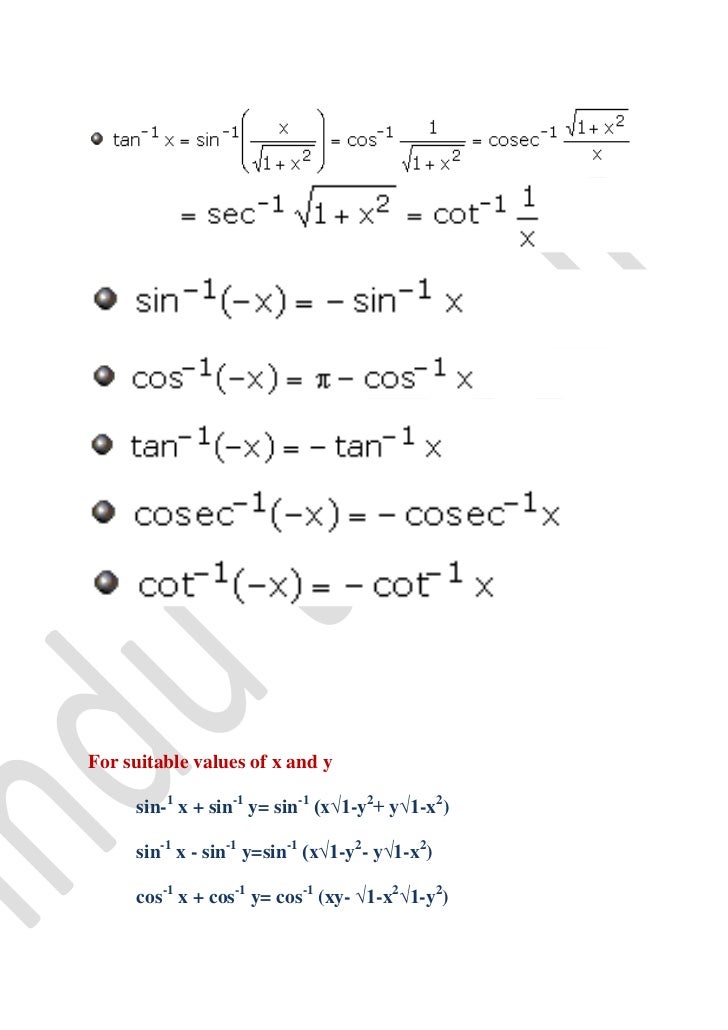



Assignments For Class Xii



If Tan 1 X 2 Y 2 X 2 Y 2 A Prove That Dy Dx X 1 Tana Y 1 Tana Sarthaks Econnect Largest Online Education Community
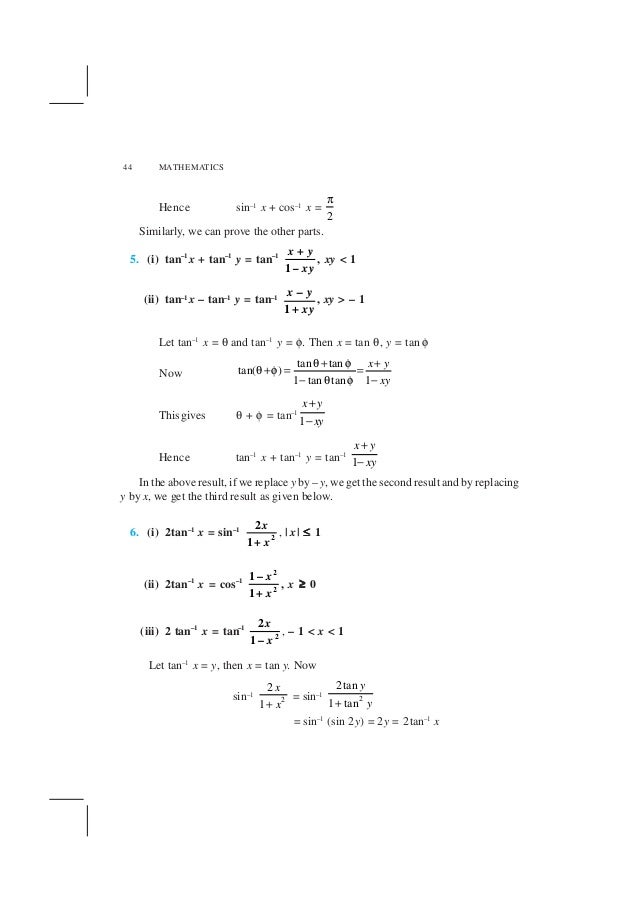



Lemh102




If U Tan 1 X 2 Y 2 X Y Then X D U D X Yd U D Y




Prove That Tan 1 1 2 Sin 1 2x 1 X2 Cos 1 1 Y2 1 Y2 X Y 1 Xy If Ixi 1 Y 0 And Xy 1 Maths Inverse Trigonometric Functions Meritnation Com
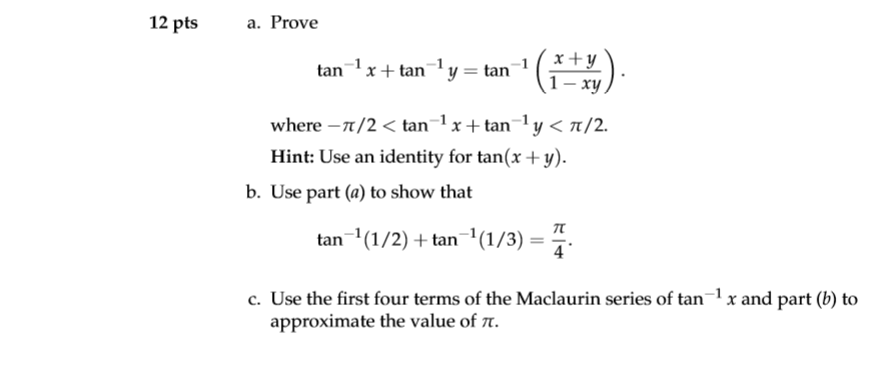



12 Pts A Prove Tan1x Tan Y Tan1 X Y 1 Xy Where 2 Chegg Com



Solve The Following Differential Equation 1 X 2 Dy Dx Y Tan 1x Sarthaks Econnect Largest Online Education Community




Tan Inverse X 2 Y 2 X 2 Y 2 Tan Inverse A Maths Continuity And Differentiability Meritnation Com
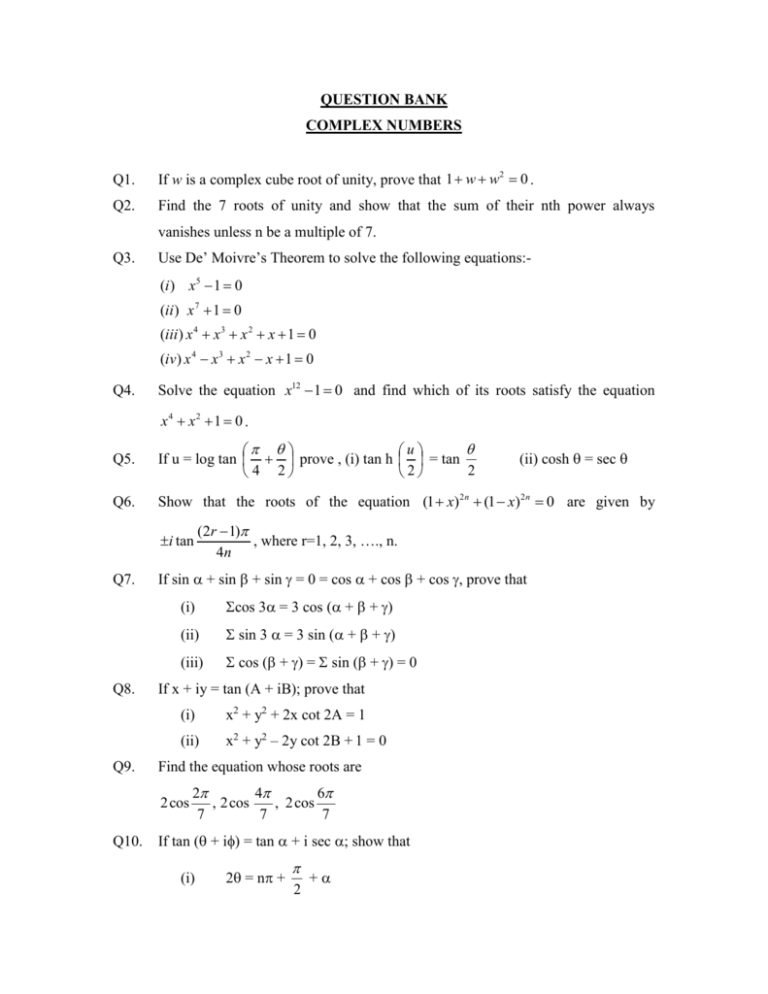



Assignment No




Example 7 Show That Tan 1 X Tan 1 2x 1 X2 Inverse



Y E Tan 1x Prove That 1 X 2 Y2 2x 1 Y1 0 In Differential Brainly In



Solve The Differential Equation 1 Y 2 Tan 1x Dx 2y 1 X 2 Dy 0 Sarthaks Econnect Largest Online Education Community



Search Q X2 2by2 Identity Tbm Isch
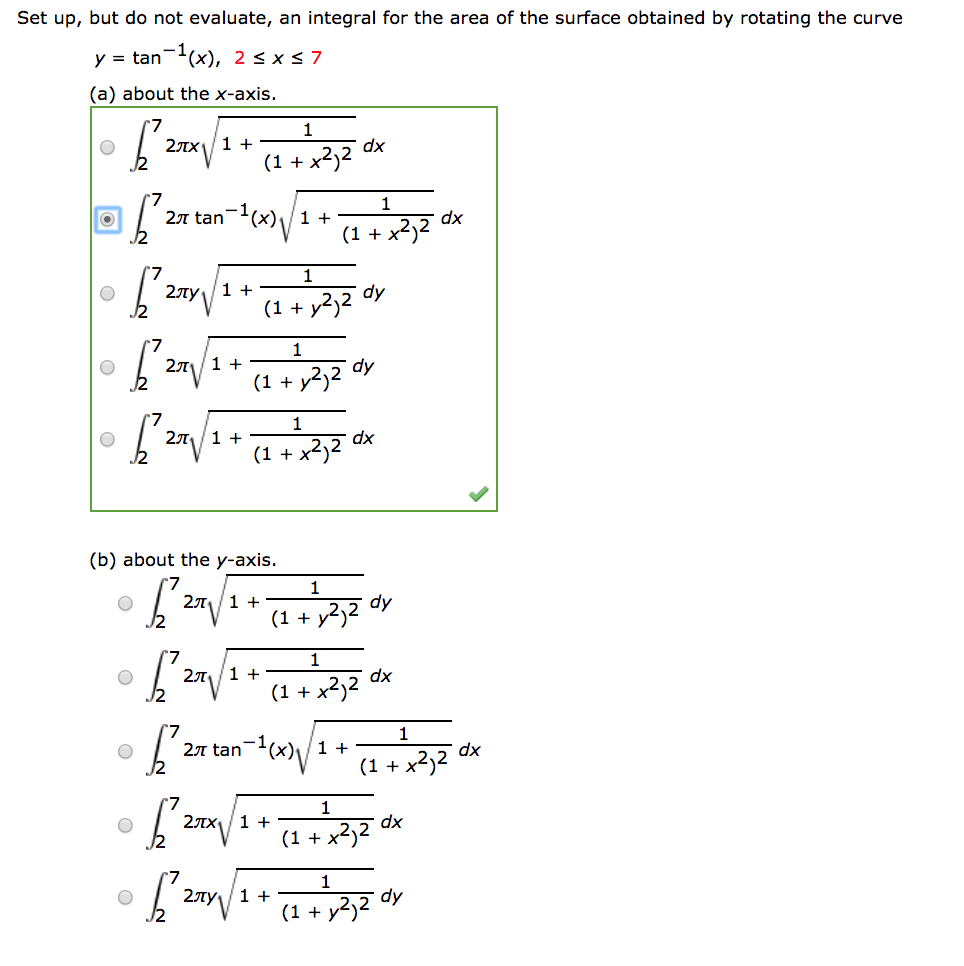



Set Up But Do Not Evaluate An Integral For The Area Chegg Com




If Y Etan X Prove That Cos2 X D2y Dx2 1 Sin 2x Dy Dx 0 Explain In Great Detail Mathematics Topperlearning Com Mbti5k33



How To Prove That Tan Yz Xr Tan Zx Yr Tan Xy Zr P 2 Where X Y Z R Quora




Show That Z Ln X 2 Y 2 2 Tan 1 Y X Satisfies The Laplaces S Equation Mathematics Stack Exchange




If Y Tan 1 2 X 1 2 2x 1 T H E N Dy Dx A Tx 0 Is 1 B 2 C 1n 2 D None Of T Youtube




If Y Tan 1 1 1 X X 2 Tan 1 1 X 2 3x 3 Tan 1 1 X 2 5x 7 Upto N Terms Then Fin Youtube




If Tan 1x Tan 1y And Tan 1z Are In A P Then Find The Algebraic Relation Between X Y An Youtube




2 A Show That The Function Z In X2 Y2 2 Chegg Com




If Y Tan 1 X 2 Then Prove That 1 X2 2 Y2 2x 1 X2 Y1 2 Own Classes




Implicit Differentiation Arctan X 2 Y X X Y 2 Youtube




Section 4 Inverses Of The Trigonometric Functions Ppt Video Online Download




If Y Tan 1 X Show That 1 X 2 D 2y Dx 2 2x Dy Dx 0 Youtube
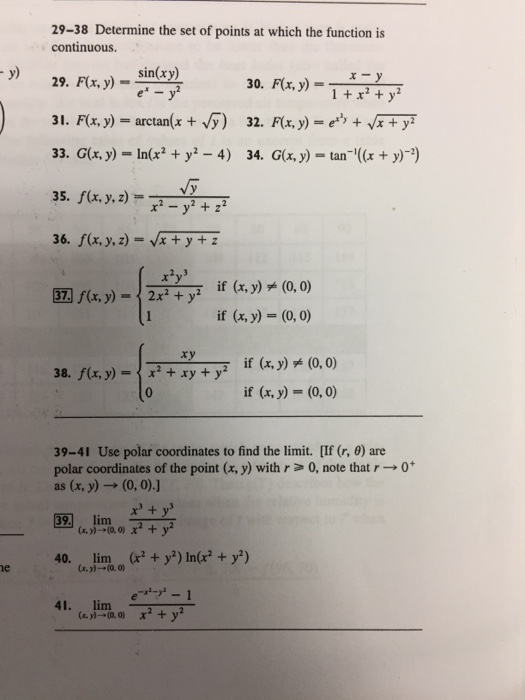



Determine The Set Of Points At Which The Function Is Chegg Com




If Tan 1 X 2 Y 2 X 2 Y 2 A Prove That Dy Dx X Y 1 Tana 1 Tana



How To Find D 2 Y Dx 2 For Y X Tan 1 X Quora
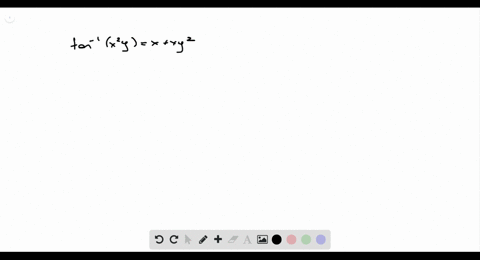



Solved Find Dy Dx By Implicit Differentiation Tan 1 X 2y X Xy 2




Iv If Y Tan 1 X 1 Sqrt 1 X 2 Sin 2tan 1 Sqrt 1 X 1 X Then Find Dy Dx For X Epsilon 1 1




If Y Ex Tan 1x Prove That 1 X2 Y2 2 1 X X2 Y1 1 X2 Y 0 Brainly In



Link Springer Com Content Pdf m 3a978 1 349 3 2f1 Pdf




If Y Tan 1x 2 Show That X 2 1 2y2 2x X 2 1 2




Problems On Partial Differentiation U Log X 2 Y 2 Z 2 U Tan 1 2xy X 2 Y 2 Z F X Ay Q X Ay Youtube



0 件のコメント:
コメントを投稿